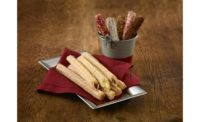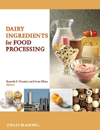Exclusive interview: Q&A with Ardent Mills, on ancient grains and quinoa trends






Snack Food & Wholesale Bakery was recently able to talk to Ardent Mills about quinoa and ancient grains trends. Ardent Mills employees quoted include Laurie Scanlin, director of R&D culinary, and Don Trouba, senior director, go-to market, The Annex at Ardent Mills.
Liz Parker: How are ancient grains playing a roll in the puffed and extruded snacks category?
Laurie Scanlin: Ancient grains play an innovative role in the puffed chip and extruded snack category, which has typically been dominated by rice, corn and potato. Some brands are paving the way for their use in this category by promoting ancient grains on the front of the label or within their brand identity. Although most ancient grains can be puffed and extruded, sorghum, quinoa, millet and amaranth are the main ancient grains used. They tend to have milder flavors that pair well with traditional and new snack seasoning flavors. Ancient grains offer consumers new textures (including the important “crunch factor”), flavors, colors and visual appeal to extruded snacks. They can be added as inclusions along with rice, corn, or potato, or stand alone as the base ingredient. Since most ancient grains are also whole grain (with protein, fiber, fat), developers need to keep in mind different expansion properties compared to traditional base ingredients. Depending on the end goal, however, custom blends can be formulated that balance extrusion properties with nutritional and marketing goals.
Ancient grains allow for the development of snack products with a variety of potential claims that have consumer appeal, such as clean label, whole grain, plant-based, gluten-free, organic, non-GMO, and “free from” top eight allergens. Ardent Mills offers a broad portfolio of ancient grains in new formats such as puffs, crisps, and flakes to add texture, flavor and visual appeal to a variety of commercial products.
LP: What are some creative applications you can use quinoa for?
LS: Quinoa is especially interesting because it’s so nutritious and versatile and comes in many different formats, including whole seeds, toasted seeds, flakes, crisps, and flour. Cooked, whole grain quinoa is recognized for its unique aroma, nutty-like flavor, and light, yet crunchy texture. Quinoa can be used in virtually anything from bowls, side dishes, salads, cereals, bars, pastas, crackers, baked goods, pizza crusts, snacks, to desserts, and more. Recently, we’ve been seeing creative applications with quinoa in non-dairy milks and creamers, plant-based yogurts and spoon-able snacks, fermented beverages and distilled spirits. At Ardent Mills’ Innovation Center, we’ve developed a quinoa-based, gluten-free panko bread crumb and have been using quinoa flour as a functional ingredient in gluten-free baked goods (for browning and as a texturizing agent) and in roux and batters (for added viscosity).
Quinoa is a gluten-free grain that offers added benefits such as fiber, plant-based protein and a documented sustainability story. Ardent Mills offers both South American and North American grown quinoa in a variety of colors, as well as preserved varieties that are traceable to the source. In the U.S., Ardent Mills works directly with Colorado farmers who grow quinoa using techniques that promote water conservation and soil biodiversity. Ardent Mills offers a broad and diverse portfolio of quinoa in a variety of colors in the form of whole grain flour, crisps, multigrain blends and mixes, and whole grain seeds, with organic options available as well.
LP: Has the demand for quinoa gone up or down during the pandemic?
Don Trouba: Demand for both our organic and conventional quinoa is strong. Even before COVID-19 we were seeing increased demand. In times like these, we believe consumers are forming new habits like meal planning, cooking from scratch and eating healthier foods. We are excited to see continued demand for quinoa and are optimistic the consumer will find new ways to incorporate it into their everyday meals.
Looking for a reprint of this article?
From high-res PDFs to custom plaques, order your copy today!












